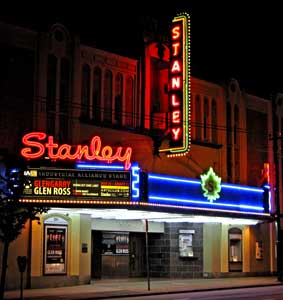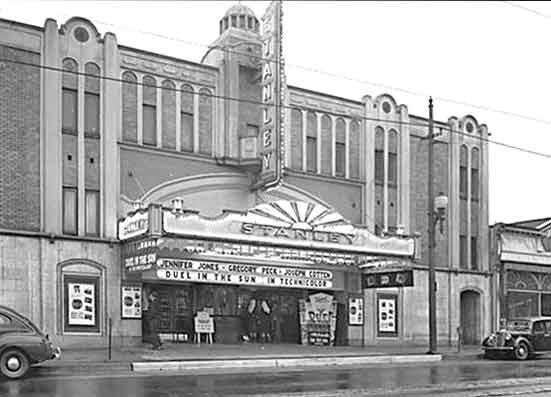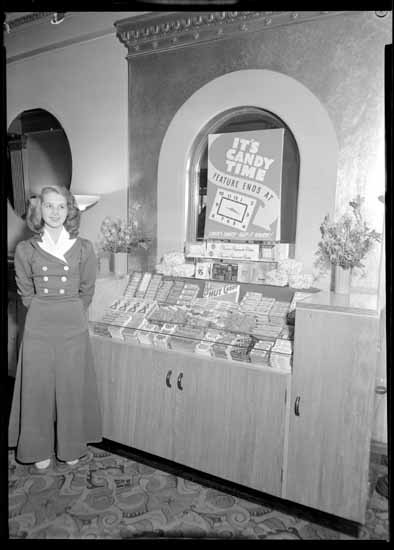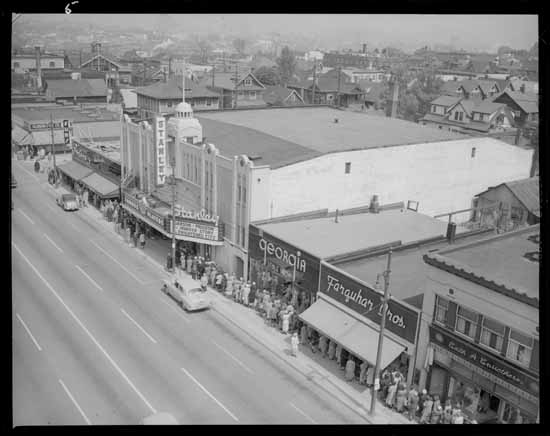|
 The
Stanley swings open: A $5.8 million upgrade brings the theatre
back to its Big Band heyday. The
Stanley swings open: A $5.8 million upgrade brings the theatre
back to its Big Band heyday.
After
two years of fundraising and renovations, the newly refurbished
Stanley Theatre at 12th and Granville is opening its doors to
live theatre.
Damian Inwood, Theatre Writer, The Province
Oct 26 1998
Experts
in drama lore believe that the walls of old theatres soak up performances
and enrich new productions with characters from plays gone by.
If that's true, Stanley audiences could be in for a lively time,
for the venerable theatre was built in 1930 and spent 60 years
as a landmark cinema, showing the best that Hollywood had to offer.
"The
Stanley already has a history, a sense of people going there to
see things," says Bill Millerd, artistic director for the Arts
Club Theatre.
"It
had a life of its own as a lively theatre, albeit a cinema. To
bring that back to life and enhance it by turning it into a venue
for live theatre is quite thrilling."
The first production in the 650-seat theatre is the new musical
revue Swing by Dean Reagan and Sam Lutfiyya, opening with a fundraising
gala on Wednesday. The gala includes a lavish post-show dessert
reception sponsored by Murchie's. Tickets are $95 (including a
$75 tax receipt) from the Arts Club box office at 687-1644.
Swing features music from the '30s and '40s and it won't be hard
for audiences to imagine themselves back in the Big Band heyday.
Many of the Stanley's original plaster decorations have been restored
to their gold-leafed splendor. The ceiling is lined with gold
scallop-shell lights and the square, fluted columns and arches
have been preserved.
"They
were fairly standard off-the-shelf plaster details," says architect
Thom Weeks, of Proscenium Architecture & Interiors Inc., which
oversaw the renovation. "You could order them from the catalogue."
The main changes to the theatre feature an expanded lobby and
a reconfigured balcony, which is now about two metres closer to
the stage.
The stage itself has more than doubled in size and a 25-metre
fly tower has been built where scenery can be hung and then raised
and lowered during performances.
Weeks says the colour scheme was taken from the original theatre
design, except for the dome, which was painted but now glows with
gold leaf.
The walls are a grey-brown taupe and the dome now has a section
cut out, so that follow-spots can shine through.
On each side of the stage are small balconies called "Juliet boxes,"
ornately decorated with shields, griffins, garlands and grapes.
They were purely decorative but can now be used as part of theatrical
performances.

During the Stanley's life as a movie theatre, three different
screens were anchored to the original proscenium arch, which was
damaged in the process.
A new fibreglass version has been built that can be raised and
lowered as needed.
The backstage has been excavated to include dressing rooms, a
green room, electrical room and trap room.
Are there any ghosts at the Stanley?
"I
don't know," chuckles Weeks. "There are two columns with an oily
substance coming through, which we haven't painted yet. We're
waiting for it to stop -- we joke that it's a stigmata."
The 650 seats are made of a burgundy fabric and the back wall
under the balcony has a rich red venetian plaster finish.
The women's washrooms have been built to twice the number required
by the building code, says Weeks. Upstairs behind the balcony,
a "crush bar" has been built in the old movie projection booth.
Original slit windows look down over the theatre canopy to Granville
Street.
The Stanley Theatre Society bought the theatre for $3.1 million
and the total construction costs, including lighting and sound
equipment, totals almost $6 million.
Construction was slightly delayed by a surprise discovery of a
layer of asbestos that was sandwiched between the original roof
and a replacement.
 The
outside of the building is made of Tindall stone, from a quarry
near Winnipeg -- the same stone that the Parliament Buildings
in Ottawa are made from. The
outside of the building is made of Tindall stone, from a quarry
near Winnipeg -- the same stone that the Parliament Buildings
in Ottawa are made from.
Weeks says that blue glass windows are being installed into a
domed turret at the top of the building, which will light up like
a beacon.
Photo:vpl archives 1951
The
vertical Stanley sign dates from 1940 and the stylized "Stanley"
script dates back to 1957. The canopy, which is the theatre's
third, is being renovated and all the neon replaced.
The building, with it's mix of art deco exterior and neo- classical
interior, is a hybrid.
"A
lot were at that time," says Weeks. "The architects were having
a little bit of fun."
He
says that when he first went into the Stanley to start on the
project, he felt a bit disappointed.
With it's ugly orange hopsack wall coverings and sticky, Coke-soaked
indoor-outdoor carpet, it all looked "pretty tired."
It didn't look very ornate but as the detail started to come back
and the gold leaf returned, Weeks said he started to appreciate
it more.
"When
you see it all lit properly, it's quite a nice building, in a
playful sort of way," he says. "We're quite happy."
Millerd says that actors and musicians are already getting excited
about performing in the Stanley.
"The
band leader of Swing, Gary Guthman, was wowed by it," said Millerd.
"He could just feel right away what a great room it's going to
be."
He says the original features have been retained and modern things
added without detracting the overall gracefulness of The Stanley.
"You
know people have passed through the doors and you know that somewhere
in the walls are all those people, that for 60 years made this
theatre come alive," he says.
"You
can't replace that."
 STANLEY
FACTS STANLEY
FACTS
- Built in 1930, designed by Henry Holdsby Simmonds, who also
designed the Grandview and Olympia Theatres.
- Interior Design: Neo-classical. A transition between the opulent
design of the 1920s, represented by the Orpheum Theatre and the
austere modernism of the 1940s, represented by the Vogue Theatre.
- Exterior design: Art deco. Heritage buff Robin Ward once likened
its slightly Moorish facade to "a touch of Casablanca on south
Granville."
- Seating: The Stanley originally seated 1,216 moviegoers and
will seat 650 theatregoers.
- Admission: Originally between 10 and 40 cents.
- Sold: To Famous Players in 1941 for $268,000.
- Bought: For $3,173,000 by The Stanley Theatre Society in 1997.
- Total refurbishing costs: $5.8 million.
|